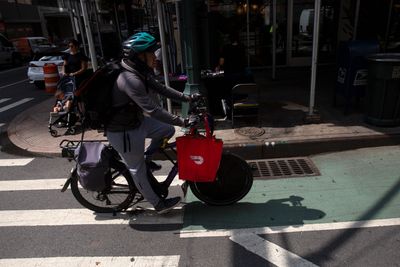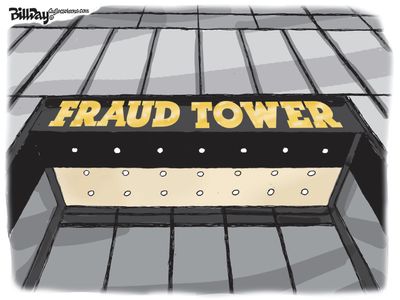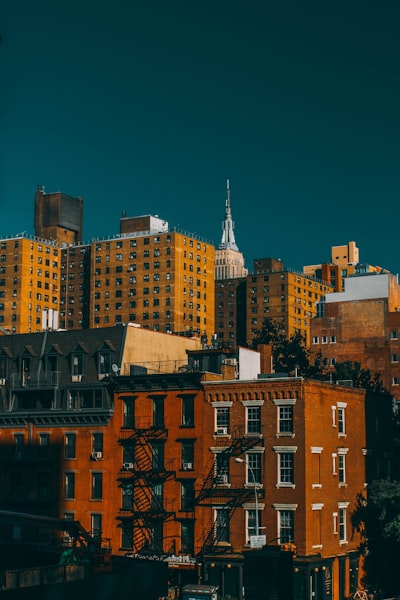In other positive news, tax revenues for the first half of the fiscal year exceeded projections by $1.7 billion — but risks still lie ahead.
By Greg David
Oct 19 5:25pm EDT
THE CITY is a nonprofit newsroom that serves the people of New York. Sign up for our SCOOP newsletter and get exclusive stories, helpful tips, a guide to low-cost events, and everything you need to know to be a well-informed New Yorker.
Here is your October economic recovery update from THE CITY. We publish a new analysis of the city’s employment, job and fiscal indicators each month.
More than 900,000 jobs have come back
A surge in jobs in September puts New York City within 5,000 jobs of the 4.7 million employment record set in February 2020, before the pandemic shut down the economy.
The city added 23,000 jobs in September on a seasonally adjusted basis, according to data released Thursday by the state Department of Labor — the largest monthly gain so far this year.
The unemployment rate remained unchanged at 5.3%.
Surpassing the pre-pandemic level, which could happen this month, would be a cause for celebration. New York City lost an unprecedented 928,000 jobs in March and April of 2020 and it has taken 30 months to recover all but a handful of them.
Still, New York’s recovery remains lackluster compared with the rest of the country’s. The U.S. exceeded its pre-pandemic employment level in June 2022 and has added about 4 million jobs since then, an increase of 3%.
The national unemployment rate is 3.8%, near an all-time low.
Because seasonal adjustments by labor economists have been thrown out of whack by the pandemic, it is likely that employment in the city was stronger over the summer than the data originally showed and that the September gain is a statistical catch-up.
Non-seasonally adjusted figures show a big increase in employment at colleges and universities as the fall semester began and a decline in finance as summer internships ended. Another big increase was in warehousing and transportation, a sector that has been volatile for the last two years.
Inequality increases again
10 largest cities ranked by inequality
- New York
- Los Angeles
- Chicago
- Houston
- Phoenix
- Philadelphia
- San Antonio
- San Diego
- Dallas
- San Jose
Inequality is again worsening in New York City, according to a recent report from economist James Parrott at the Center for New York City Affairs at the New School.
Parrott notes that New York was the only one of the 10 largest U.S. cities to see an increase in inequality between 2019 and 2022, according to a measure called the Gini Income Equality Index. Other cities saw no change except for Chicago, where inequality declined. Inequality had stabilized in New York between 2013 and 2019.
The likely cause are the gains for the wealthy as a result of strong stock, bonds and real estate markets during the pandemic and smaller wage gains among lower income workers than elsewhere, Parrott says.
Cash now, gaps later
Projected state budget gaps
| 2025 | 2026 | 2027 |
| $9.1 billion | $13.9 billion | $13.4 billion |
Tax revenues for the first half of the state’s fiscal year, which ended Sept. 30, exceeded the most recent projections by $1.7 billion, according to state comptroller Thomas DiNapoli, putting the state on course to end the year with cash left over.
Nevertheless, DiNapoli projects deficits for the next three fiscal years reaching $36.4 billion, which would require tough choices for the legislature and the governor to balance the budget.
The question is what happens next. Do economic risks make it likely the budget deficits remain this large or even grow, as the comptroller and fiscal groups like the Citizens Budget Commission argue? Or is the unexpected revenue a sign of economic strength that makes it likely the gaps will shrink, as progressive groups like the Fiscal Policy Institute contend?
Gov. Kathy Hochul will have to decide which she believes in after Jan. 1 when he draws up her budget for the fiscal year, which begins April 1.
Office occupancy stuck around 50%
After exceeding 50% after Labor Day, office occupancy in the New York area has remained stuck at slightly below that figure.
A survey by the New York City Partnership of 140 major employers found somewhat higher occupancy in the city, with 58% of workers back in the office on any given weekday, with 44% of respondents settling in on three days a week in the office.




